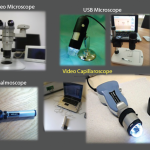MADRID—Researchers have found that systemic lupus erythematosus (SLE) is independently linked with bipolar disorder and say the findings point to a need for greater awareness of psychiatric problems in patients with SLE.
In work led by investigators at Tel Aviv University in Israel and presented at the 2017 Annual European Congress on Rheumatology (EULAR), researchers analyzed data from the medical database of Clalit Health Services, which includes a chronic disease registry with continuous real-time input. The study included data for 5,018 SLE patients and 25,090 matched controls.1
Investigators found a higher prevalence of bipolar disorder among SLE patients than among controls—0.62% vs. 0.26% (P<0.001). In a multivariate analysis, SLE was found to be independently associated with the disorder, with an odds ratio of 1.74 (P=o.012).
“Neuropsychiatric manifestations among lupus patients are present in virtually all lupus patients,” said Shmuel Tiosano, MD, who presented the findings and is a rheumatologist and researcher at Sheba Medical University. “We think the neuroinflammation is a key factor here.”
Overlap exists among SLE patients who complain of physical difficulties and bipolar disorder patients, because they also have physical complaints and often neglect their health. In this study, research found that bipolar disorder has a link to the SLE. “Their physical complaints, we eventually found out, had been a manifestation of lupus,” he said. “That’s what’s so interesting about it.”
“Lupus patients usually have many, many physical complaints and all sorts of emotional complaints,” Dr. Tiosano said. Caregivers should try to distinguish between depressive symptoms due to their underlying illness and signs there could be a psychiatric disease at work.
Neuropsychiatric symptoms develop in 20–70% of SLE patients and half the time these symptoms develop ahead of SLE. The onset of mood symptoms can happen any time in the course of SLE and at any severity level of disease.
Nailfold Capillaroscopy
In another study, researchers in Belgium conducted the first systematic review of nailfold capillaroscopy and SLE, finding correlations they say merit further investigation.2 Nailfold changes on capillaroscopy have been seen in SLE, but no clear role has yet been established for the approach in classification or staging.
In this study, researchers did a literature review of all published studies involving patients with SLE who’d had capillaroscopy performed. They reviewed findings from 27 studies after excluding other studies based on such things as ACR criteria for SLE not being met and having fewer than five patients in a study.
They found that several parameters in capillaroscopy exam were significantly more prevalent in SLE than in healthy controls. They included tortuous capillaries, abnormal morphology, hemorrhages and higher nailfold score, said presenting author Karin Melsens, a PhD student and an academic assistant trainee in rheumatology at Ghent University. She worked with Vanessa Smith, MD, PhD, professor of rheumatology at Ghent University.
In six studies, they also found that disease activity correlated with nailfold capillaroscopy score. In one study, abnormal morphology—defined as meandering shapes—was associated with disease activity. Frequent attacks of Raynaud’s phenomenon and gangrene were significantly correlated with dilated capillaries in one study each, researchers found.
“The first systematic review on capillaroscopy in SLE attests conclusive, significant differences in morphology, hemorrhages, semi-quantitative assessment and qualitative assessment compared with healthy controls,” researchers wrote. “Additionally, results demonstrate … an association of capillaroscopic changes with disease activity in SLE.”
Larger-scale research is now underway with the EULAR study group on microcirculation in rheumatic diseases, they said.
Location, Location, Location
Another study, from researchers in Greece, found that people living in urban areas of Crete were twice as likely to be diagnosed with SLE than people living in rural areas.3
“We found that the disease is twice as common in patients who have lived exclusively in urban areas,” said George Bertsias, MD, associate professor of rheumatology at the University of Crete, who presented the findings. “It starts earlier, and there are more male patients [with SLE] in the cities compared with the villages.”
Not many studies have looked at possible links between SLE and where people live, even though it’s known that the disease involves a complicated interaction between genetic, epigenetic and environmental factors, Dr. Bertsias said.
Crete is considered to have a genetically stable population and is homogeneous in terms of ethnicity and sociodemographic traits, and without significant inequalities in access to healthcare facilities. About 60% of the people on the island live in rural areas, and 40% in urban areas.
Researchers examined data from the Lupus Epidemiology and Surveillance registry in Crete, which includes patients from community centers to tertiary centers. They found that SLE prevalence was significantly higher in urban areas, at 165 per 100,000 people, than rural parts of the island, at 123 per 100,000 (P<0.001).
Researchers did a subanalysis on 200 people who lived exclusively in urban areas or exclusively in rural areas and found the relative risk for urban compared with rural was 2.0 (95% confidence interval [CI], 1.5–2.9). Patients in urban regions had a significantly lower age at diagnosis—38 vs. 44 years old (P=0.005). There was also a lower female-to-male ratio in urban areas than in rural areas: 6.5 to 1 compared with 11 to 1 (P<0.05).
“Then we looked at the disease and found that SLE in rural areas has a much higher frequency of skin and joint disease, as opposed to nephritis, which is more common in SLE in urban places,” Dr. Bertsias said. “Also, the prevalence of antiphospholipid antibodies is higher in SLE in urban areas compared with rural areas.”
Although patients in urban areas have more skin and joint disease, there is no difference in the damage that develops—possibly because it is so often severe enough that they will get intense treatment, Dr. Bertsias said.
He notes it’s not known what causes these differences, but further research should look at specific environmental factors. For example, smoking, which contributes to development of SLE, is more common in urban areas, and pesticide use, another contributing factor, is more common in rural areas.
“Our study is hypothesis generating about the possible effect of the place of residence plus environment.”
Thomas R. Collins is a freelance writer living in South Florida.
References
- Tiosano S, Gendelman O, Comaneshter D, et al. The association between systemic lupus erythematosus to bipolar disorder—a real-life study (abstract THU0248). Annual European Congress of Rheumatology. 2017 Jun 15. Madrid, Spain.
- Wijnant S, Ingenoli F, Melsens K, et al. Nailfold capillaroscopy in systemic lupus erythematosus: a systematic review and critical appraisal (abstract THU0252). Annual European Congress of Rheumatology. 2017 Jun 15. Madrid, Spain.
- Gergianaki I, Fanouriakis A, Adamichou C, et al. Comparison of urban versus rural environment associated systemic lupus erythematosus (SLE): Risk and clinical features (abstract THU0254). Annual European Congress of Rheumatology. 2017 Jun 15. Madrid, Spain.


